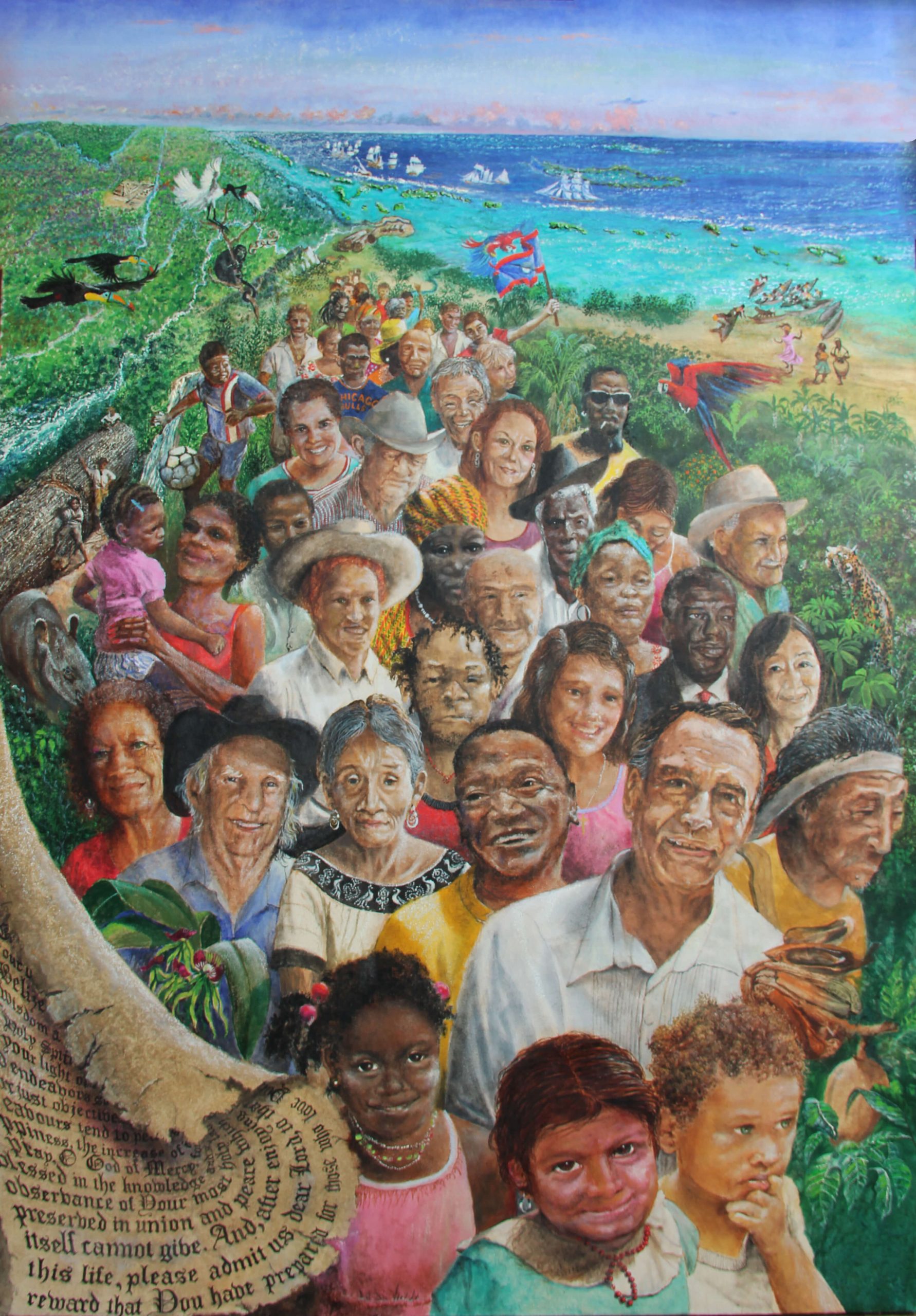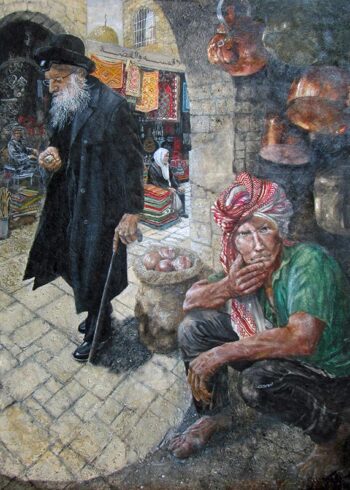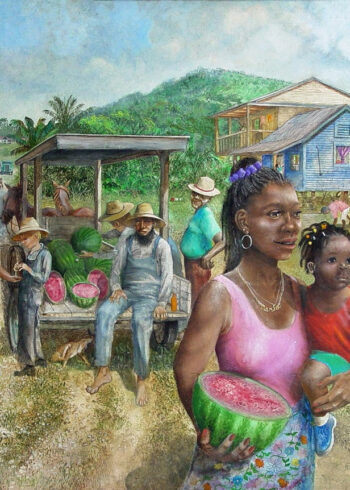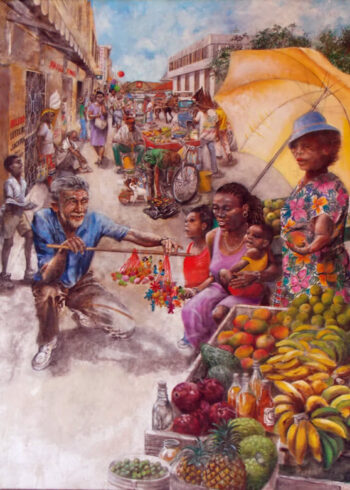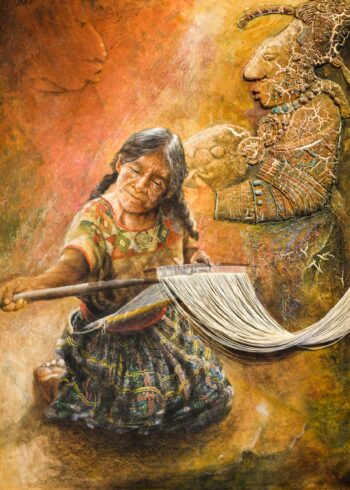When this painting was completed, I had nearly completed 80 years, 50 of those years having been spent in Belize. Changes have occurred and are continuing at a rapid rate. Who will remember the foundation, the roots, or how it began? What is the driving force behind and the ballast beneath the image we cherish of peace and stability in this tiny little nation known at one time as British Honduras and today as Belize.
Far out in the dark blue ocean are remnants of the geological past, the oceanic Blue Hole, Turneffe Atoll, and Glovers Reef. Separating the deep ocean expanse from the shallow waters is the reef marked by white foam as waves smash into the living coral barrier, a World Heritage designation. This barrier reef, the second longest in the world is famously credited in the history of Belize as much of the reason the Spanish could not invade Belize. Scholars of the history of Belize will recognize on September 10th, 1798, the British frigate Merlin came to support the two sloops, Towzer and Tickler and schooners, Swinger and Teazer, bravely facing fourteen of the largest of Spanish galleons approaching the reef. The Spanish were met head on by a small force of resident woodcutters called Baymen assisted by black slaves. After a two-and-a-half-hour battle, ravaged by sickness and ships that wrecked on the roof, the Spanish withdrew and the Battle of St. Georges Caye became history.
The turquois expanse between the mangroves on the shore and the white foam of the celebrated reef is occupied by the dozens of small islands called Cayes that are part of Belize. The artist had attempted to loosely represent the larger of these.
Further down the coast there was another kind of invasion in 1802. These people came by canoe from Roatan fleeing oppression and seeking a safe haven. They identify themselves as Garifuna, descendants of a shipwrecked slave ship, who intermarried with the Arawak Indians of the island of St. Vincent, in the Caribbean. Escaping persecution, they fled to the island of Roatan, and then the rest of Central America. Today, the Garifuna people live mainly in small towns on the Caribbean coasts from Belize to Guatemala, Honduras and Nicaragua.
All of those who came ashore. the English, Africans and Garifuna were met by the Maya, whose temples and stone artifacts are found countrywide. They are the indigenous people who have been on this soil since as early as 2,300 BC.
Included in this painting are the national symbols, the flag, the black orchid, the tapir and toucan. There is also wildlife, two jabiru storks, two macaws, the jaguar and howler monkey. The Thousand Foot Falls is represented. To the left is a giant log with the loggers standing near to illustrate just how huge the trees were that were cut down. In the far right corner is a mahogany pod and a pod burst open with the seeds spilling out to symbolize the seed of the early day economy, the log wood and mahogany that was the chief source of revenue and the seeds of the planting of a nation. But most important of all in the very front of the painting are the true sprouts, the children.
In the left corner, written in old English script is the national prayer, not in its entirety but written to convey the belief of the founding fathers that God is the source of our preservation in union and peace.
He is indeed the preserver of our very existence.
It was the artists intention to represent as many ethnic and cultural identities as could be done in this space. The prominent individuals are Mr. George Price and above him, Mr. Phillip Goldson. These two men battled it out politically to form the framework of the Belizean governmental structure. The remaining individuals represent the hardworking common people who contributed their health, talent and energy to construct a nation that became independent from Great Britan on September 21st 1981. With God’s grace and mercy Belize will continue to nurture and provide for those who live here and be a “unique to the world” place of peaceful diversity.
Description
Earlier versions of Diversity can be seen here.
Additional information
| Dimensions | 52 × 36 in |
|---|

